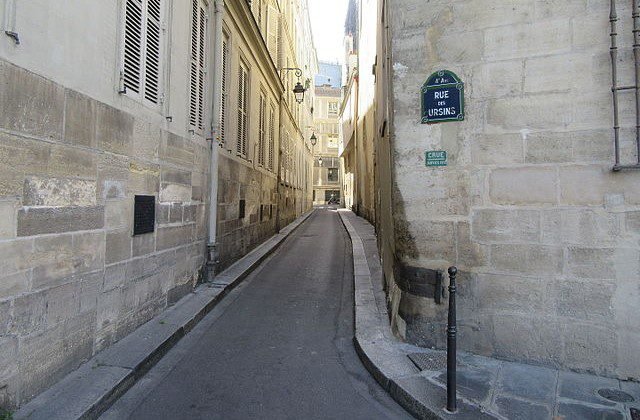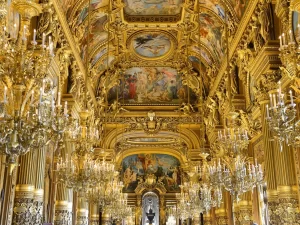Are you ready to explore Paris’s scary side? Join us as we tour the top 5 most haunted locations in the City of Light. Paris is home to a wide range of strange and gruesome locales thought to be haunted by the spirits of the past, from abandoned asylums to old catacombs. The Paris Opera House, where the spirit of a young ballet dancer is supposed to linger, and the Catacombs of Paris, where the remains of millions of Parisians line the walls, are two of the most well-known haunted locations. We present you with 5 haunted places in Paris.
Here are the 5 haunted places in Paris:
1- The Eiffel Tower
The Eiffel Tower is certainly haunted. All of the ghosts, though, remain true to the subject of Paris: love. Each ghost was led there by love in some strange, twisted way, and their existence ended because of love. One of the most well-known Eiffel Tower ghost stories is about a man who took his fiancée up the tower to propose. When she declined his marriage proposal, he slammed her into the railing in rage. Instead of regaining her balance, the girl is alleged to have died by falling over the railing.
Because this incident is supposed to have taken place in the 1920s, there is little documentation available today. However, it’s not far off from anything that may have happened. Some visitors to the tower now claim to have seen a young woman dressed in 1920s garb going along the railing before disappearing. Is this the soul of the girlfriend who said no?
2- The Apartment of Marcel Petiot
A posh apartment building near the Eiffel Tower formerly harbored one of Paris’ most notorious serial killers. Marcel Petiot, the doctor, had a frightening past. He was diagnosed with a variety of mental illnesses as a child, teenager, and adult yet was never punished for his crimes. Some of these included, at the age of 11, bringing a gun to school to shoot it and stealing army blankets, morphine, and other army goods while enlisted, among other things.
For whatever reason, he became a doctor, and in only three years, he managed to deceive and murder anywhere from 27 to 150 people. He pretended to be a compassionate man and provided a safe haven for many Jews fleeing the Nazis.
3- Pont des Suicides

This bridge, often known as the suicide bridge, is stunning. It is composed of stone and is surrounded by flora. You’d never guess its history based on its appearance. The deaths began as soon as the bridge and adjacent park opened in 1867, and they only intensified in the 1890s. In 1896, there were no fewer than 29 suicides every month. It is now said to be haunted by the souls of those who died on the bridge. Pedestrians walking along the bridge and in the neighboring park at night might sometimes hear the noises of people who died on the bridge.
4- Catacombs
The Paris Catacombs, commonly known as the “Empire of the Dead,” is a network of subterranean tunnels and halls that house the skeletons of millions of Parisians. The tunnels were built in the late 18th century as a remedy to the city’s congestion of cemeteries. The deceased’s bones were removed from their graves and moved to the catacombs, where they were placed in decorative designs along the tunnel walls.
The Catacombs are frequently associated with hauntings and odd happenings. Some people believe that the spirits of the dead who were interred in the catacombs can still be found there. Visitors visiting the catacombs have reported feeling uneasy or being watched, as well as hearing unusual noises and feeling chilly areas. Some claim to have seen ghostly apparitions or felt a presence with them while exploring the Catacombs.
5- Palais Garnier
The Palais Garnier, often known as the Paris Opera House, is a magnificent and historic opera house in Paris’s 9th arrondissement. The opera theatre was built in the late 1800s and was designed by architect Charles Garnier. It is famous for its magnificent and elegant architecture, and it has housed the Paris Opera since it opened in 1875. It also serves as the scene for the well-known Phantom of the Opera narrative. Although The Phantom of the Opera is a work of fiction, some of its chilling features are factual! A lake, for example, is located beneath the opera theatre.
Despite these tragedies, the main ghost who is seen is actually none of those mentioned above. Rather, it is that of an elderly woman walking around the outside of the Opera House looking for her lost lover.




